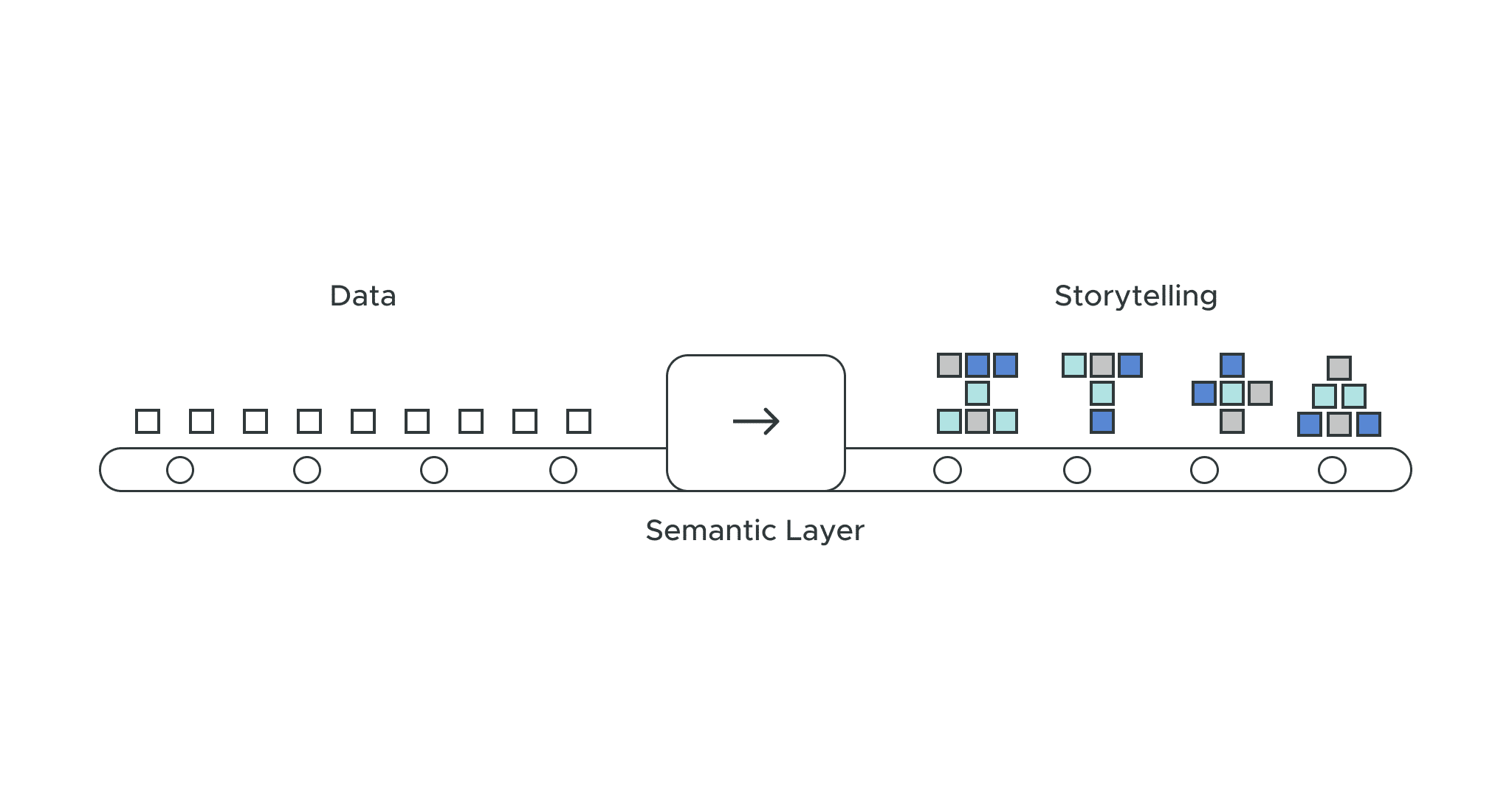October 18, 2019
Should You Build or Buy Your Universal Semantic Layer?
Data storytelling is the process of using data to tell a story and make it more accessible and understandable to a wide audience. Visualizing data and using narrative techniques are important elements of data storytelling. A semantic layer can quickly become a data team’s (or any other business team’s) tool of choice to support this process. In this blog post, we will discuss how a semantic layer can help to enhance data storytelling projects and make them more effective.
The Semantic Layer and Its Role in Data Storytelling
A semantic layer is a layer of abstraction that sits on top of a data source and provides a unified, business-friendly view of the data. This layer allows users to access and work with the data in a way that is more meaningful and relevant to their needs, rather than having to navigate through complex technical details. The semantic layer acts as a bridge between the raw data and the users, making it easier for them to understand and interact with the data.
One of the main benefits of using a semantic layer in your data strategy is that it can improve the accessibility and usability of data for non-technical users. By providing a simple, intuitive interface, the semantic layer makes it easier for users to explore and understand the data, even if they do not have a technical background. Additionally, by providing a common vocabulary and data model, the semantic layer helps to reduce confusion and inconsistencies in data interpretation.
Additionally, a semantic layer can help improve the performance of data storytelling projects. By providing a simplified and optimized view of the data, the semantic layer can help to reduce the complexity and time required to create charts and visualizations. By providing a common data model, the semantic layer can ensure that data is accurate and consistent – two qualities essential for effective data storytelling.
Why is accuracy and consistency essential? Because they provide the right foundation for teams to draw compelling narratives from the good data in their hands.
Plus, a semantic layer enables users to access and combine data from multiple sources. This feature can be especially useful in organizations where data is stored in different systems and formats. By providing a unified view of the data, the semantic layer makes it easier for users to combine and analyze data from different sources, which can be a powerful tool in data storytelling projects.
Semantic Layer Use Cases in Data Storytelling Projects
Here are a few examples of how a semantic layer can support data storytelling in different verticals:
Retail Industry: Retail organizations can use a semantic layer to combine data from multiple sources, such as point-of-sale systems, inventory management systems, and customer data, to create a unified view of sales and customer behavior. This data can then be used to create visualizations and reports that help to identify trends and patterns in sales, customer demographics, and product popularity.
Healthcare Industry: How would healthcare organizations benefit from a semantic layer? They could use it to combine data from electronic health records, claims data, and clinical trial data to create a comprehensive view of patient health and treatment outcomes. This data can then be used to create visualizations and reports that help to identify trends and patterns in patient health, treatment effectiveness, and cost of care.
Financial Industry: Financial organizations could leverage a semantic layer to pool data from multiple sources, such as trading systems, risk management systems, and customer data, to create a unified view of financial performance and risk. This data can then be used to create visualizations and reports that help to identify trends and patterns in financial performance, market risk, and customer behavior.
Manufacturing Industry: Manufacturing organizations could also do well with a semantic layer. Namely, they could pull together data from production systems, quality control systems, and various supply chains to create a unified view of production performance and supply chain efficiency. This data can then be used to create visualizations and reports that help to identify trends and patterns in production performance, quality control, and supply chain efficiency.
Government Agencies: Government agencies can use a semantic layer to gather data around crime, demographics, and socioeconomics to create a unified view of risk and events in different regions. This data can then be used to create visualizations and reports that help to identify trends and patterns based on that data, supporting government bodies in data-driven decision making.
Here’s the bottom line: A semantic layer is a powerful tool that supports data storytelling by improving the accessibility, usability, and performance of data for non-technical users. By providing a simple, intuitive interface, a common vocabulary and data model, and the ability to access and combine data from multiple sources, a semantic layer makes data storytelling more effective and efficient.
However helpful a semantic layer may be, it is not a replacement for the creativity, critical thinking, and narrative skills essential to effective data storytelling projects. Top-tier organizations and their teams must have a balance of technical and creative skills to optimize a semantic layer and efficiently tell the unique stories of their data.
We know you get it by now – a semantic layer can be a supremely helpful tool in guiding data-driven decision-making. But did you know that it might be more essential to enterprise analytics than ever? Learn more about our 2023 AI Predictions.
ANALYST REPORT